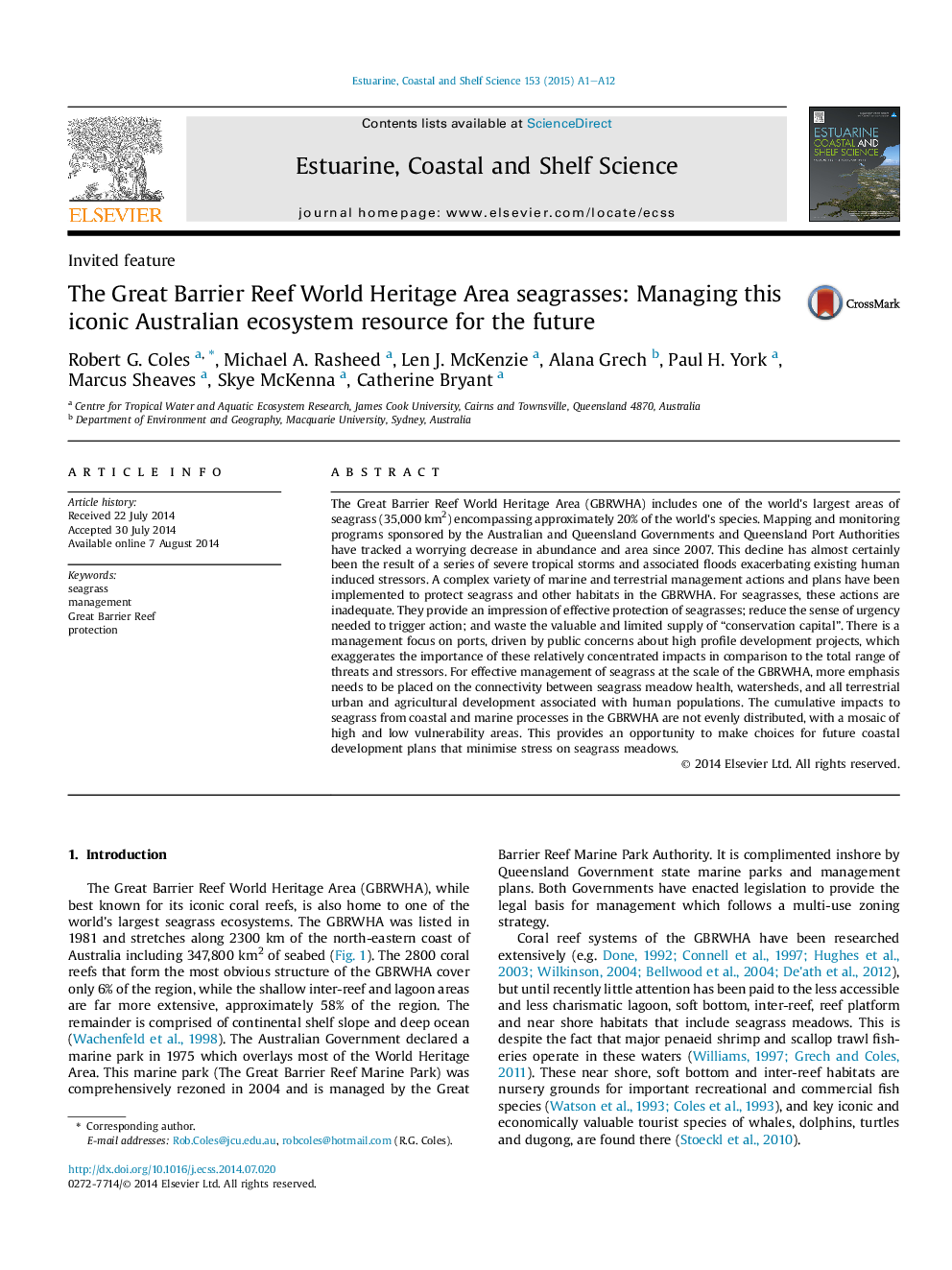| Article ID | Journal | Published Year | Pages | File Type |
|---|---|---|---|---|
| 4539586 | Estuarine, Coastal and Shelf Science | 2015 | 12 Pages |
•We describe 35 000 km2 of seagrass in the Great Barrier Reef World Heritage Area.•Abundance along the southern populated coast has declined since 2007.•Present management approaches are failing to adequately protect seagrass.•There is a need for greater emphasis on connectivity with terrestrial processes.•Cumulative impacts are not evenly distributed providing management options.
The Great Barrier Reef World Heritage Area (GBRWHA) includes one of the world's largest areas of seagrass (35,000 km2) encompassing approximately 20% of the world's species. Mapping and monitoring programs sponsored by the Australian and Queensland Governments and Queensland Port Authorities have tracked a worrying decrease in abundance and area since 2007. This decline has almost certainly been the result of a series of severe tropical storms and associated floods exacerbating existing human induced stressors. A complex variety of marine and terrestrial management actions and plans have been implemented to protect seagrass and other habitats in the GBRWHA. For seagrasses, these actions are inadequate. They provide an impression of effective protection of seagrasses; reduce the sense of urgency needed to trigger action; and waste the valuable and limited supply of “conservation capital”. There is a management focus on ports, driven by public concerns about high profile development projects, which exaggerates the importance of these relatively concentrated impacts in comparison to the total range of threats and stressors. For effective management of seagrass at the scale of the GBRWHA, more emphasis needs to be placed on the connectivity between seagrass meadow health, watersheds, and all terrestrial urban and agricultural development associated with human populations. The cumulative impacts to seagrass from coastal and marine processes in the GBRWHA are not evenly distributed, with a mosaic of high and low vulnerability areas. This provides an opportunity to make choices for future coastal development plans that minimise stress on seagrass meadows.
Graphical abstractFigure optionsDownload full-size imageDownload high-quality image (137 K)Download as PowerPoint slide
